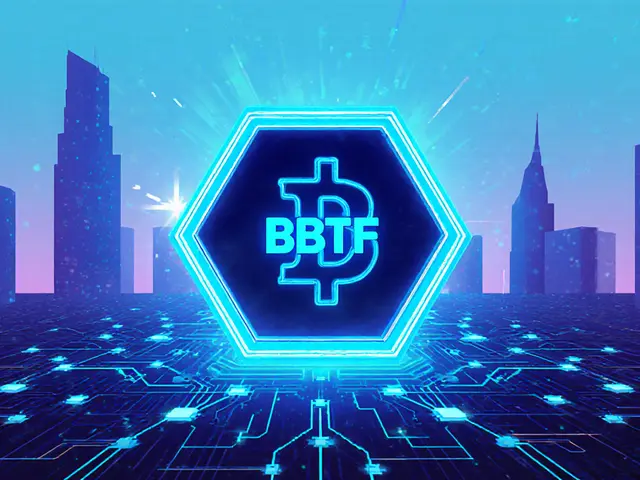NFT Authentication Effectiveness Calculator
Authentication Effectiveness Report
Comparison of Authentication Methods
| Method | Tamper-Proof | Real-Time Verification | Cost (per unit) | Best For |
|---|---|---|---|---|
| NFT Authentication | Yes – immutable blockchain record | Instant via QR/RFID/IoT | Medium-high (initial setup) | Luxury, high-value, complex supply chains |
| Paper Certificate | No – can be forged or lost | Manual check only | Low | Low-cost items |
| Serial Number + Database | Partially – central server vulnerable | Depends on connectivity | Medium | Mid-range consumer goods |
Imagine scanning a bottle of wine with your phone and instantly seeing a tamper‑proof record that proves it’s the genuine article. That’s what NFTs do for product authenticity - they turn a physical item into a digital certificate stored on an immutable ledger.
What an NFT‑Based Product Passport Looks Like
When we talk about NFTs in this context, we’re referring to a NFT is a unique digital token that lives on a blockchain - a decentralized, cryptographically secured database where every transaction is recorded in an immutable block. Each token carries a set of attributes: manufacturer, serial number, production date, certifications, and ownership history. Because the token can’t be altered or duplicated, it acts as a permanent “product passport.”
How the Authentication Process Works
1. Token Minting - At the factory, a unique identifier (usually a serial number) is linked to an NFT on the blockchain. The minting process embeds metadata such as material composition and batch origin.
2. Physical Link - The identifier is printed as a QR code is a two‑dimensional barcode that can be scanned by any smartphone, directing the user to the token’s record on the blockchain. Some brands also embed RFID tags are tiny radio‑frequency chips sewn into the product, allowing contactless reads via dedicated scanners. More advanced setups attach IoT sensors are connected devices that can report temperature, location, or tamper events directly to the blockchain.
3. Consumer Verification - The end‑user scans the QR code or taps an RFID reader. The app pulls the NFT metadata, showing provenance, authenticity stamp, and the full transaction trail.
4. Ownership Transfer - When the product changes hands (e.g., resale of a luxury watch), the new owner’s wallet address is recorded as the token’s latest holder, preserving a transparent chain of custody.
Technical Architecture Behind the Scenes
The backbone consists of three layers:
- Blockchain Layer - Public networks like Ethereum or permissioned ledgers such as Hyperledger Fabric store the NFT and its immutable history.
- Application Layer - Smart contracts govern token creation, updates, and transfer. They enforce rules like “only the manufacturer can mint a token for this product line.”
- Integration Layer - APIs connect the blockchain to existing ERP or PLM systems, ensuring that production data flows automatically into the NFT metadata.
Security is baked in: each transaction is signed with cryptographic keys, and the distributed nature of the ledger eliminates single‑point‑of‑failure risks.
Why NFTs Beat Traditional Authentication Methods
| Method | Tamper‑Proof | Real‑Time Verification | Cost (per unit) | Best For |
|---|---|---|---|---|
| NFT Authentication | Yes - immutable blockchain record | Instant via QR/RFID/IoT | Medium‑high (initial setup) | Luxury, high‑value, complex supply chains |
| Paper Certificate | No - can be forged or lost | Manual check only | Low | Low‑cost items |
| Serial Number + Database | Partially - central server vulnerable | Depends on connectivity | Medium | Mid‑range consumer goods |
The immutable nature of NFTs eliminates the “copy‑and‑paste” weakness of paper certificates. Because verification happens on the spot via a mobile device, retailers can instantly reject counterfeit items at the point of sale.
Real‑World Success Stories
Wine Industry - Premium wineries embed NFTs in bottle labels. One limited‑edition barrel fetched $130,000 in 12 seconds when its NFT was auctioned, proving that collectors value the digital provenance as much as the liquid.
Luxury Fashion - Brands like Burberry and Gucci embed RFID tags linked to NFTs, allowing shoppers to scan a tag and see the garment’s origin, artisan, and previous owners. The result? Higher resale confidence and reduced gray‑market sales.
Automotive - High‑end manufacturers attach IoT‑enabled NFTs to each vehicle. When a car is serviced, the service record updates on the blockchain, giving future buyers a complete maintenance history.
Implementation Considerations
Complexity & Expertise - Setting up a blockchain‑based system requires developers familiar with smart contracts and supply‑chain integration. Many brands partner with specialized NFT development agencies to shorten the learning curve.
Cost vs. Value - For a $10 accessory, the ROI of an NFT may not justify the expense. The sweet spot is products where authenticity adds significant perceived value - think $1,000+ items.
Consumer Education - Even the most polished app fails if shoppers don’t know how to scan a QR code or interpret the token data. Clear signage, in‑store tutorials, and FAQs are essential.
Infrastructure Reliability - While public blockchains are robust, they can suffer congestion. Permissioned ledgers offer faster transaction times but demand a trusted consortium of participants.
Future Outlook
The market for blockchain authentication is expanding fast. By 2026 analysts expect that over 30% of luxury goods will carry an NFT‑based passport. Emerging standards promise “phygital” tokens that combine the physical tag, the digital NFT, and an interactive experience - think AR overlays that show the product’s story when you point your phone at it.
Upcoming roadmap items from major blockchain platforms include simplified SDKs for QR‑code generation, lower gas fees, and built‑in compliance modules for data‑privacy regulations like GDPR. As these hurdles melt away, mass‑market items such as sneakers and cosmetics will likely adopt the technology, making counterfeit‑free shopping the norm rather than the exception.
Key Takeaways
- NFTs create a tamper‑proof, digital passport linked to every physical product.
- Integration tools (QR codes, RFID, IoT) let consumers verify authenticity instantly.
- The biggest ROI appears in luxury, automotive, and high‑value consumer goods.
- Successful rollout hinges on skilled developers, reliable blockchain partners, and clear consumer education.
- Industry momentum suggests NFTs will become a standard part of supply‑chain transparency within the next few years.
Frequently Asked Questions
How does scanning a QR code prove a product is genuine?
The QR code contains a pointer to the NFT stored on the blockchain. When you scan it, the app reads the token’s metadata - manufacturer, batch, and transfer history - and compares it with the blockchain’s immutable record. If the data matches, the product is verified; any discrepancy signals a counterfeit.
Can NFTs be hacked or forged?
Because the NFT lives on a decentralized ledger, altering it would require compromising the majority of network nodes - a practically impossible feat on reputable blockchains. The token’s cryptographic signature ensures its authenticity.
Do I need a crypto wallet to verify an NFT‑authenticated product?
No. Verification apps use read‑only public keys to fetch token data. A wallet is only needed if you want to transfer ownership or resale the product on a secondary market.
What costs are involved for a brand to adopt NFT authentication?
Initial costs include smart‑contract development, integration with QR/RFID hardware, and blockchain transaction fees (gas). Ongoing expenses are network maintenance and occasional token minting fees. For high‑margin products, the ROI typically materializes within 12‑18 months through reduced counterfeiting losses and premium pricing.
Will NFT authentication work globally, considering different regulations?
Yes, as long as the chosen blockchain complies with local data‑privacy rules. Permissioned ledgers can be hosted within specific jurisdictions to meet regulatory requirements while still offering immutability.







Ciaran Byrne
October 6, 2025 AT 09:08Great overview of how NFTs can lock down product provenance. The focus on tamper‑proof records really hits the mark. Brands looking to protect high‑value items should definitely explore this route.
Brooklyn O'Neill
October 7, 2025 AT 03:44I love how the piece walks through the practical steps, from minting to consumer verification. It makes it easy for teams to map the tech onto existing workflows. Collaboration between supply‑chain and dev ops will be key.
Greer Pitts
October 7, 2025 AT 22:20Wow this is pretty mind‑blowing, I gotta say! The way you link QR codes straight to a blockchain is defintely a game changer. I can see small startups adopt it faster than big corps. Plus the instant check feels like magic.
Lurline Wiese
October 8, 2025 AT 16:56Picture this: a counterfeit bottle of vintage wine tries to slip past the guard, but the NFT screams “FAKE!” in neon red on your phone. The drama of a digital guardian protecting a centuries‑old legacy is pure cinema. It’s not just tech; it’s storytelling wrapped in code. Every scan becomes a climax, a reveal that validates authenticity. The stakes feel real, and the audience-your customers-are the heroes.
Jenise Williams-Green
October 9, 2025 AT 11:32The ethical implications of immutable product passports cannot be ignored. By ensuring that luxury goods are traceable, we reduce the incentive for shady manufacturing practices. This technology forces counterfeiters to confront a transparent market. It’s a moral imperative for brands to adopt such safeguards.
Laurie Kathiari
October 10, 2025 AT 06:08While the hype is tempting, we must be wary of the hidden costs. The energy consumption of public blockchains remains a serious concern, especially for eco‑conscious brands. Moreover, locking data forever may clash with privacy regulations. A balanced approach is essential.
Katherine Sparks
October 11, 2025 AT 00:44Thank you for presenting such a comprehensive analysis. The structured comparison tables greatly aid in decision‑making. I appreciate the clear articulation of benefits and trade‑offs. :)
Kimberly Kempken
October 11, 2025 AT 19:20Isn’t it a bit naive to assume that technology alone can eradicate unethical manufacturing? History shows that determined bad actors will find ways around any system. We must pair NFTs with robust legal frameworks and enforcement. Otherwise it’s just a shiny veneer.
Eva Lee
October 12, 2025 AT 13:56From a supply‑chain integration perspective, the interoperability layer is critical. Leveraging RESTful APIs to sync ERP outputs with smart‑contract triggers ensures data fidelity across VMI nodes. Additionally, token provenance analytics can be fed into KPI dashboards for real‑time visibility.
Carthach Ó Maonaigh
October 13, 2025 AT 08:32Holy crap, this NFT thing sounds like the superhero cape every luxury brand's been begging for. Imagine slapping a blockchain badge on a watch and watching counterfeiters sweat. It's a wild ride, and the market’s gonna love the drama.
Cynthia Rice
October 14, 2025 AT 03:08Honestly, this feels like tech evangelism.
John Corey Turner
October 14, 2025 AT 21:44The layered architecture you described mirrors classic distributed systems design, which is reassuring. By abstracting the blockchain layer, developers can focus on business logic rather than low‑level consensus mechanisms. This separation of concerns could accelerate adoption across mid‑tier manufacturers.
Jim Griffiths
October 15, 2025 AT 16:20For those new to the concept, start with a permissioned ledger to control costs and speed. Then pilot QR integration on a single product line before scaling.
Matt Nguyen
October 16, 2025 AT 10:56One must question who truly controls the “public” blockchain infrastructure-big tech conglomerates or shadowy sovereign entities? The illusion of decentralization often masks centralized mining pools that could manipulate token issuance. It’s a subtle power play that the average consumer never sees.
Natalie Rawley
October 17, 2025 AT 05:32Oh dear, imagine the scandal when a counterfeit bag slips through an unverified system-journalists would have a field day! The drama of a brand’s reputation teetering on the edge is enough to make anyone’s heart race.
Scott McReynolds
October 18, 2025 AT 00:08The promise of NFTs as immutable product passports is undeniably alluring, especially for industries where heritage and authenticity are core brand pillars.
Yet, the journey from a concept drafted on a whiteboard to a seamless consumer experience is fraught with technical, regulatory, and psychological hurdles.
First, the underlying blockchain must balance security with throughput, because a network that stalls during peak demand will undermine the very trust it seeks to build.
Second, the integration of physical markers-be they QR codes, RFID tags, or IoT sensors-requires a robust supply‑chain choreography that many legacy manufacturers simply lack.
Third, consumers need intuitive interfaces; a clunky app will deter even the most tech‑savvy shopper from verifying authenticity.
Fourth, data privacy laws such as GDPR impose strict constraints on what metadata can be stored on public ledgers, compelling brands to consider permissioned or hybrid solutions.
Fifth, the environmental footprint of certain blockchains cannot be ignored, prompting a shift toward proof‑of‑stake or layer‑2 scaling solutions.
Sixth, the cost equation must make sense: the per‑unit expense of minting, tagging, and maintaining NFTs should be offset by reduced counterfeit losses and potential premium pricing.
Seventh, there is a cultural component; luxury buyers often value the tactile experience as much as digital provenance, so the technology must enhance rather than replace that feeling.
Eighth, resale markets stand to benefit immensely, as verified ownership histories can unlock liquidity and trust among secondary buyers.
Ninth, brand guardians must establish clear governance policies for token revocation in cases of product recalls or fraud investigations.
Tenth, the ecosystem of third‑party validators and auditors will need to mature to provide independent assurance of compliance.
Eleventh, education campaigns are essential; without clear messaging, the average consumer might view NFTs as a gimmick rather than a safeguard.
Twelfth, partnerships with technology providers can accelerate deployment, granting access to pre‑built SDKs and secure hardware modules.
Finally, ongoing monitoring and iterative improvement should be baked into the roadmap, ensuring that the solution evolves alongside emerging threats and market expectations.
In sum, while NFTs hold transformative potential for product authenticity, a holistic, cross‑functional strategy is indispensable for turning vision into lasting value.
Alex Gatti
October 18, 2025 AT 18:44Interesting take on the tech its potential is huge but adoption hinges on simplicity and clear ROI
Patrick MANCLIÈRE
October 19, 2025 AT 13:20It’s encouraging to see the community rally around standards that make integration smoother. Sharing best‑practice guides will lower the barrier for smaller producers.
Kortney Williams
October 20, 2025 AT 07:56I’ve been pondering the long‑term data stewardship aspects. Ensuring that token metadata remains accessible without exposing sensitive details is a subtle challenge.
Adarsh Menon
October 21, 2025 AT 02:32Oh great another buzzword to make us feel modern while nothing really changes.
Promise Usoh
October 21, 2025 AT 21:08In considering the ontological status of a digital token attached to a physical object, one must reflect upon the nature of identity itself. The interplay between immutable ledger entries and mutable real‑world conditions raises profound questions about authenticity.